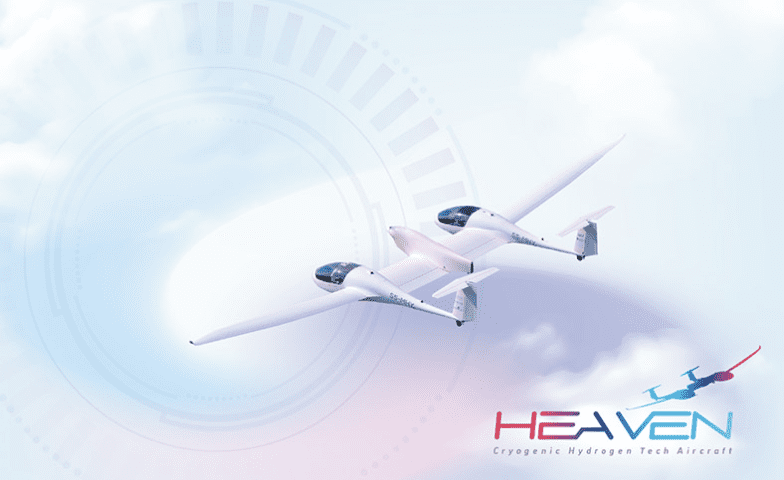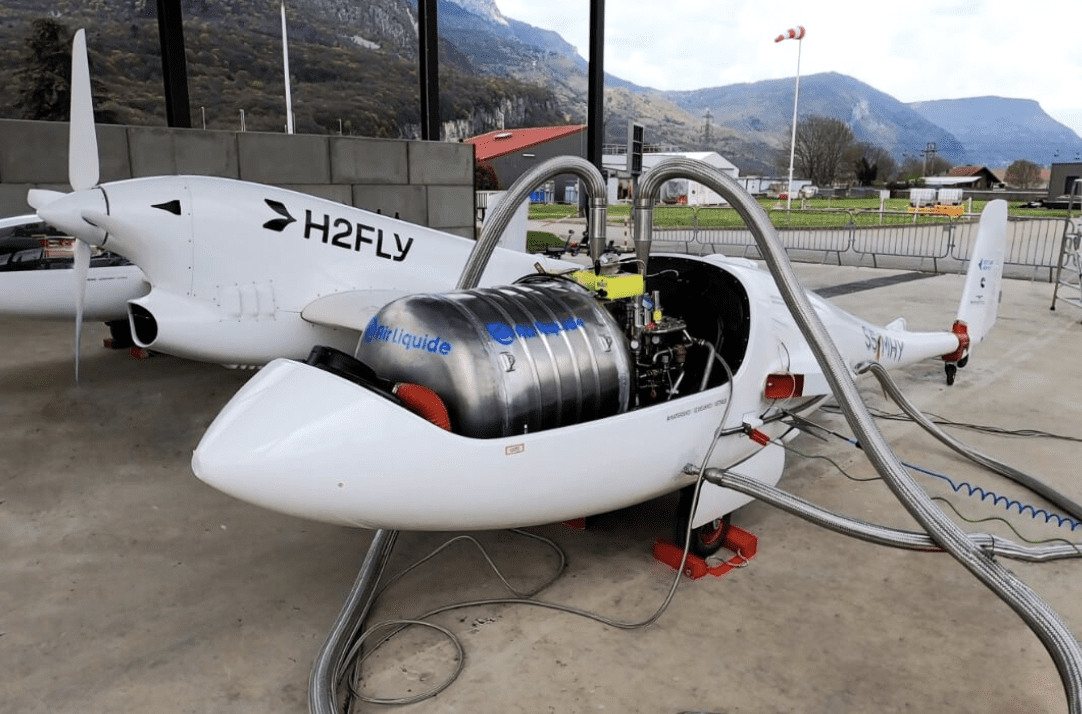In January, California-U.K.-based startup ZeroAvia flew a 19-seat prototype prop jet in England for 10 minutes. The milestone was the first time a hydrogen-fuel cell jet was used in an active flight. It was the first step in creating a new sustainable aviation fuel (SAF). Fast forward to September, German hydrogen aviation firm H2Fly says it has developed the world’s first piloted liquid hydrogen jet.
The company announced on Sept. 7 that the prototype HY4 aircraft successfully conducted four test flights at Maribor Airport, Slovenia. One lasted more than three hours, as the plane demonstrated the power of a hydrogen-electric fuel cell propulsion system fitted with cryogenically stored liquid hydrogen.
According to H2FLY, the results point toward liquid hydrogen as a superior fuel source to gaseous hydrogen. The HY4 showed that liquid H2 can double the range from 750 kilometers (466 miles) to 1,500 kilometers (932 miles).
“This achievement marks a watershed moment in the use of hydrogen to power aircraft,” Professor Josef Kallo, co-founder of H2FLY, said in a press release. “Together with our partners, we have demonstrated the viability of liquid hydrogen to support medium and long-range emissions-free flight.”

Photo Courtesy Project HEAVEN
H2Fly is a participant in the European Union’s Project HEAVEN. The European bloc has made it a significant mission to develop and deploy aircraft using more hydrogen fuel.
The goal is to retrofit existing two- and four-seater airplanes with hydrogen engines for test flights. They will also expand to uncrewed aerial vehicles (UAVs).
H2Fly is a leading partner for the project, along with Pipistrel Vertical Solutions, the German Aerospace Center, and Spain’s Center for Social Innovation Fundación Ayesa. Testing the reliability and efficiency of hydrogen aircraft will steer more adoption of the first element as the preferred, clean choice of airliners.
French industrial gas supplier Air Liquide, another participant in Project HEAVEN, supplied the hydrogen for H2Fly’s test.
Not only does liquid hydrogen appear better for long-distance travel, but it also has less weight. The liquid form has lower tank weights and volume, even when cryogenically frozen, compared to the gaseous state. That gives planes better range and payload, meaning less fuel burned because of heavier tanks.

Photo Courtesy H2Fly
Liquid hydrogen also creates less noise pollution, offering a better flying experience for passengers. Kallo sees this as a fantastic business opportunity. He explained to “FutureFlight” that the hydrogen jet industry could become a “multi-billion-euro market” if enough engines can be made to meet the aviation industry’s needs.
“As an engineer, I can say that a 40-seater hydrogen-powered plane is a question of money and time,” he told “FutureFlight.” “After that, it becomes visionary.”
H2Fly also believes retrofitting planes is the best step moving forward. However, they face competition from firms like ZeroAvia and Universal Hydrogen. These test flights prove that liquid hydrogen could be the more reliable fuel. As more airliners move forward with their plans for SAF integration, H2Fly may benefit significantly. Some companies have already received signed commitments from airlines.
The biggest challenge remaining in the push for hydrogen-powered aircraft is the supply. There are questions about the amounts of liquid hydrogen needed for larger planes and where airports will store the refueling supplies. If hydrogen becomes a first-choice power source for planes, sourcing and storage will be critical. For now, retrofitting smaller aircraft will be the baby steps needed to get the ball rolling.





